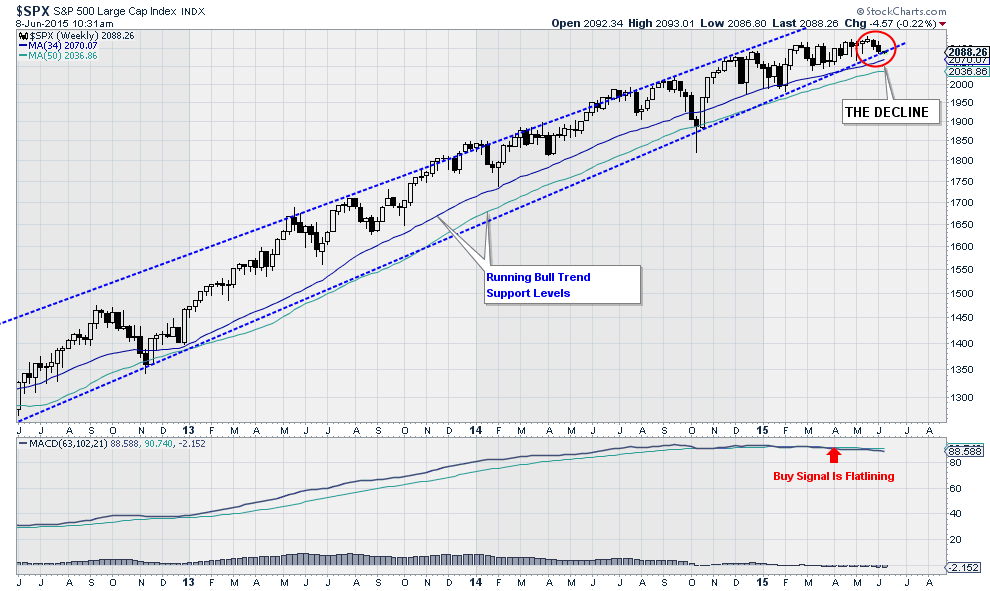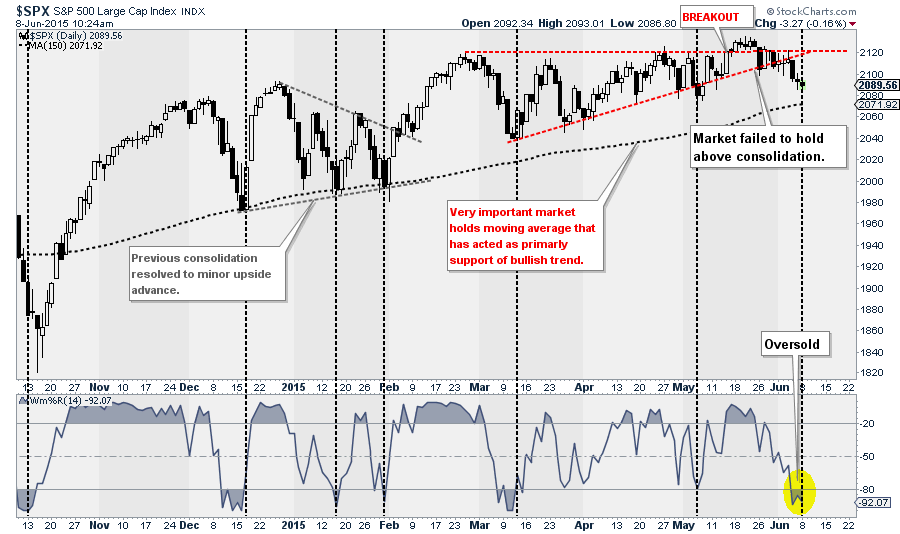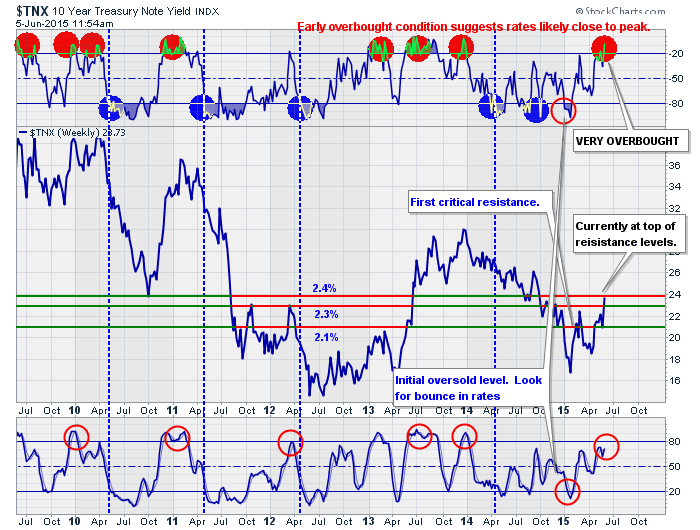Apparently, judging by the number of emails, the recent volatility in the stock and bond markets has finally awoken many complacent investors. To wit:
"Stocks and bonds are both declining in value at the same time. What should I do to protect my portfolio as I am bleeding money over the last couple of weeks?"
Most importantly, this particular email has several very important messages contained with it. While it is often written and preached by the mainstream media that investors should only "invest for the long term by buying and holding an indexed based portfolio," the reality is that the majority of individuals are not able to that. This has been shown by virtually every investor-based study over time that repeatedly shows that investors repeatedly make emotionally based buy/sell decisions at exactly the wrong times.
However, the decline in stock prices as of late is a "real" issue. The reason that I say it is the "real" issue is because the decline is barely perceivable when put into relative context of the market advance.
Given the length of time that the market has advanced without a 10% or greater correction, it is not surprising that investors are currently more attentive to the possibility of a larger decline. This is particularly the case given the attention to historical seasonal summer tendencies that suggest weaker market performance.
However, while the bullish trend of the market does indeed remain intact, it is extremely noteworthy that the deterioration in the underlying technical structures have gained momentum as of late. As I discussed with a financial reporter on Friday:
"As I have discussed previously, the markets are starved for liquidity. The stronger than expected jobs report, which doesn't jive with the economic data, paves the way for the Fed to hike rates in June or September.
This is a further restriction in liquidity. Remember, the markets have been rallying on BAD news because it pushes out Fed rate hikes. Good news - is technically bad for stocks at this late stage of the economic and market cycle."
"Here is the problem, the markets need to rally and close positive on Friday. Otherwise, the downward pressure will likely continue into next week putting the recent breakout at risk.
The collision of the short-term moving average and the bullish trend makes Friday's closing action very important. A closing break below that level could trigger more selling next week.
Mind you, this is like weather forecasting. It is currently cloudy with a chance of rain. However, things can change which is why it is critical, as an investor, to be prepared to REACT. In other words, if we think it MIGHT rain we take an umbrella with us. We don't walk around with it open; we are just prepared in the event it begins to rain.
The market has been sending repeated warnings as of late which suggests that investors remain on HIGH ALERT. With portfolio's fully allocated currently, the risk to principal of a sharp downward contraction is elevated.
On a very short-term basis, the market has gotten very oversold over the last several weeks as noted below. That oversold condition will likely facilitate a bounce in the days ahead.
If that market is going to regain its "mojo," stocks need to hold the longer-term moving average that has primarily defined the "bull trend" since the beginning of 2013, and subsequently break out to new highs. A failure to do so will likely lead to a bigger correction in the coming weeks ahead.
While market conditions do not warrant a reduction in the allocation model currently, they do suggest that investors be aware of the mounting risks. Given the surge in emails received as of late over the recent minor decline, I can only imagine what a bigger correction will likely elicit a much broader wave of "panic." Given that many investors have become desensitized to market declines, a 10% correction will "feel" much worse.
Bonds Look Appetizing
As I discussed recently in "OMG, Putting Jump In Interest Rates Into Perspective:"
"First, let's put the recent "short covering squeeze" in the bond market into perspective. The chart below is a 40-year history of the 10-year Treasury interest rate. The dashed red lines denote the long-term downtrend in interest rates."
"The recent SURGE in interest rates is hardly noticeable when put into a long-term perspective. After rates dropped to their second lowest level in history of 1.68%, only exceeded by the "great debt ceiling default crisis of 2012" level of 1.46%, the recent bounce to 2.26% was expected."
Over the last couple of weeks, as the ECB frontloaded much of its QE program, the combination of a lack of liquidity in the bond market combined with a repositioning of US dollar/Euro positions, has lead to a sell-off in Treasuries that sent interest rates higher.
This is NOT THE END OF THE BOND-BULL MARKET. Rather, it is likely a very good opportunity to be adding bond exposure back into portfolios for two reasons:
The first is that interest rates, on a weekly basis, are now extremely overbought. Given the inverse relationship between bonds and interest rates, this means that bonds are now very oversold. As I wrote in this past weekend's missive:
"Bonds got extremely overbought in a market that is short on supply. It takes very little to sharply move interest rates from such low levels. However, if the 10-year rate rises it slows economic growth, housing, and CapEx. In an already weak economic environment, there is very little room for rates to run."
"Importantly, notice that, in the top part of the chart, interest rates are once again extremely overbought which suggests this continues to be an excellent opportunity to increase bond exposure in portfolios.
However, given that "timing is everything," the addition of further bond exposure, or the initiation of a position, should be done in incremental stages. Buy some now and add exposure if rates creep higher. It is unlikely that rates will exceed 2.9% in the current economic environment, so the risk for current levels is somewhat limited."
The second is that bonds will be the beneficiary of a market correction. If the stock market does indeed enter into a bigger correction during the summer months, bonds will likely be the recipient of the rotation out of stocks.
This is an incredibly difficult time for individual investors. While it is easy to be lulled into complacency by the unabated rise in the markets since 2013, it is important to remember that "to all good things an end must come."
While there is little reason to become exceedingly cautious in portfolios today, the risks are mounting simply due to the length of time and distance of the markets advance. Bonds and cash can act as a significant buffer against market declines when they occur. That buffering limits the "panic" that leads to poor investment decision making by investors over time.





